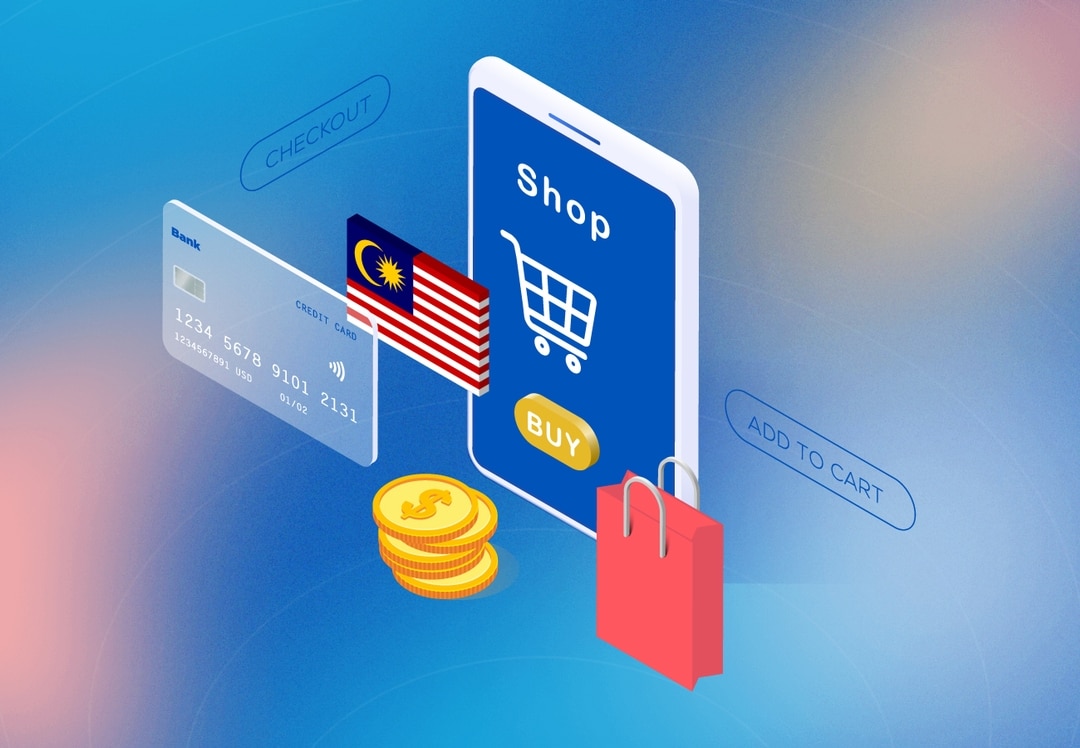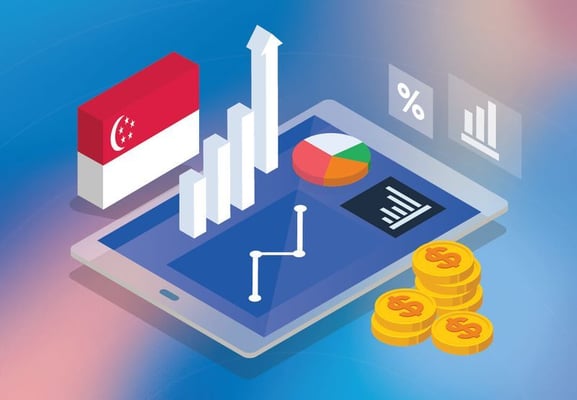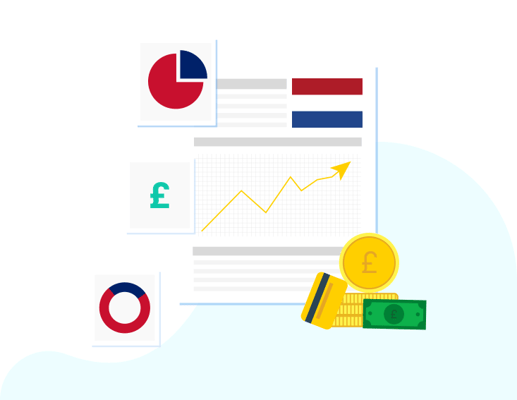The rise of e-commerce has opened various payment options for Malaysian consumers. Today, customers are not limited to one payment option. Hundreds of easy-to-use and jargon-free payment options are available at customers’ fingertips, making their lives easier.
For a business to successfully make sales in Malaysia, it is essential to understand and integrate various payment methods into its payment model to enhance the existing user experiences.
Malaysia’s Payment Trends for 2022
More than 86% of the Malaysian population is online, and the trend will continue in the future too. More than half of the population is shopping online. The high usage of mobile devices has directly impacted these factors in Malaysia. Malaysian e-commerce will nearly double by 2025, as people are inclining towards digital payment methods. Malaysian consumers are actively engaging in cross-border and domestic market transactions.
The government of Malaysia has introduced various initiatives to promote the existing e-commerce market. This relaxation from the government has opened vast opportunities for businesses to establish their hubs in Malaysia. As a young country, the tech-savvy generation is drifting towards online payments and spending a reasonable amount of time engaging with e-commerce websites. A significant share of digital transactions utilizes digital wallets, net banking, credit cards, and buy now pay later (BNPL) features.
Top 10 Payment Methods for Malaysia
1. Cash
Cash payments are the easiest and one of the oldest payment methods. Moreover It is a reliable and on-the-spot payment method that requires no devices. Cash payments are still one of Malaysia’s most widely used payment methods. It still owns 39% of the payment share; however, it is projected that cash payments will drop to 15.1% by 2025, losing its market share to other cashless options like credit cards, debit cards, and mobile wallets.
2. Credit Cards
Credit cards help customers borrow funds from the bank. Customers agree to pay interest in the future on the borrowed funds from the institution. Credit cards cover over 27% of sales payments and 19% of e-commerce payments of the Malaysian population; this trend seems to remain stable in the upcoming time.
Many payment gateways provide secure credit card transactions. Many Malaysian banks have partnered with VISA, MasterCard, Maestro, American Express, and Discover to offer their services to the broader population. More than 200 countries accept VISA and Mastercard, making them one of the most renowned names in payment gateways for credit cards.
3. Bank Transfers
Bank transfer transactions directly take place from one bank to another. An evident advantage of bank transfers is that businesses can securely transfer unlimited amounts of funds anywhere around the globe.
Bank transfers are optimal solutions for B2B fund transfers. Bank transfers account for more than 30% of e-commerce payments in Malaysia. However, the e-commerce payment systems are looking to earn some percentage from their shares. Some popular Banks in Malaysia are
-
Affin Bank.
-
Alliance Bank.
-
AmBank.
-
CIMB.
-
Hong Leong Bank.
-
Maybank.
-
Public Bank.
-
RHB Bank
4. Debit Cards
A debit card directly links to the customer’s checking account. When users use debit cards for online purchases, the money is immediately deducted from the card owner’s checking accounts. Debit card payments account for 12% of e-commerce payments and 13% of sales payments. Debit cards are still a popular payment method; however, this payment method puts a cap on the amount a customer can spend in a day.
Customers must contact their issuing institution to make payments over that daily payment.
5. Digital/Mobile Wallets
Mobile payments are the trending payment method for the Malaysian population. Consumers are getting the hang of the cashless and easy money transfer processes. .
Digital wallets account for more than 15% of the transactions made by the Malaysian population. Still, half of the Malaysian population is yet to shop online, which positively signifies the rise of digital/mobile wallet usage. Here are some of the popular Malaysian E-wallets
-Boost
Boost is a popular mobile payment service in Malaysia with over 9 million users who can make payments for affiliated services or shops in an easy and convenient way.
-GrabPay
GrabPay is an e-wallet that is part of the Grab super app. It is one of the leading payment methods in Southeast Asia. GrabPay lets customers make mobile payments conveniently in-person and online. Consumers simply need to download the Grab app on their mobile device and top up their GrabPay wallet or add a bank card to get started.
-TouchnGo
Touch n’ Go is a leading e-wallet in Malaysia that can be used for online payments, fund transfers, mobile recharges, and more.
Good Read: Top 12 Payment Gateways in Malaysia You Need to Know
6. DuitNow QR
DuitNow is a leading real-time online fund-transfer service that allows users to send and receive funds without using an account. DuitNow users get a unique id that they can use to transfer funds online.
DuitNow QR is an important feature provided by DuitNow that lets users make QR payments. A quick response (QR) code contains the payment details; users need to scan the code using any e-wallet or banking app to process the payment. QR payments are accessible and feasible options for Malaysians. The platform has opened its door to process cross-border QR payments.
Malaysian users can make QR payments in Thailand; rest assured, the links to Singapore and Indonesia will go live soon.
7. Direct Debits
Direct Debit is another primary payment method used by Malaysians for recurring payments. With direct debit enabled, customers can pre-authorize payments with their respective banks for allowing standing instructions. These scheduled payments are set up as per the consumer’s demands. A business running on subscriber services can efficiently use this payment method to meet set payment instructions.
8. Cash on Delivery
Customers use cash on delivery (COD) to make payments after ordering products from e-commerce stores. Nonetheless, Malaysians still prefer to pay after receiving the product.
Cash on delivery accounts for 9% of e-commerce payments; nevertheless, this is an important payment method. This method is highly beneficial for cash-based businesses. Additionally, this method is helpful for customers who are still hesitant to use card-based and other digital payment methods.
9. Buy-Now-Pay-Later
Buy-now-pay-later (BNPL) allows consumers to purchase products with a small down payment, while the rest of the payments are paid later in instalments without additional interest. Customers love to keep shopping when the products are in an affordable range. Buy-now-pay-later makes it easier to make payments and afford products. Unlike credit cards, consumers using the buy-now-pay-later payment method don’t have to pay any interest on their purchases, making this method quite popular among youngsters.
By 2025, BNPL will triple the Malaysian eCommerce spending. Per estimates, by 2025, the BNPL spending will exceed 10%. Major platforms like Atome, myIOU, and Pine Labs are vital players in providing BNPL services in Malaysia.
10. Financial Process Exchange (FPX)
Financial Process Exchange (FPX), a Malaysia-based payment option, allows customers to conduct online transactions with their existing bank credentials. FPX is jointly owned by 11 financial entities, including Bank Negara Malaysia (BNM), the Central Bank of Malaysia, and a few others. To use FPX, customers are automatically redirected to their respective banking applications, through which the payments are conducted. In short, the customer’s payment experience depends directly on how their bank environment is in its entirety.
FPX is an intuitive platform that gives its users the existing comfort of everyday banking without going through the rigamarole of endless online interactions.
Local Payment Methods and Rising Complexities for Businesses
Local payment methods are regionally available to Malaysians. Unlike global payment methods, they are operated locally within Malaysia. These local payment methods include e-wallets, bank transfers, BNPL, and credit cards. With the surge of online payments, the country has seen a boom in emerging payment solutions. Hundreds of local and global payment solutions are available to Malaysians. Managing a massive number of local payment methods for a business can be daunting. Each payment solution is monitored individually; as new payment methods emerge, the system becomes more complex and sophisticated.
Monitoring payment methods is not only a complicated process, but the cost of integrating all these payment methods in your business is also very high. Companies require a highly skilled team to facilitate various payment systems that add extra expenditure to a business’s balance sheet.
Safeguarding against fraud is yet another aspect that needs to be kept in mind. Payment frauds are not unique in the e-commerce world. Users’ data is often compromised and further used to extract consumer funds. These failures in payment security can create unending challenges for e-commerce and other customer-centric businesses. They have to pay heavy penalties to cover the losses borne by their customers.
The advent of various local payment options has increased business challenges. Businesses must keep the data secure while providing multiple payment choices to their customers.
How inai Helps You With Malaysian Payment Methods?
inai is your ultimate solution to manage all local and global payments. You can conduct your business safely without worrying about the complexities and the efforts needed to integrate various payment methods into your e-commerce platform.
Rest assured, we help you integrate payment solutions into your business, saving you from behind-the-scenes technical jargon and unnecessary complexities. With the help of inai, your business doesn’t need a team of experts to handle all your payment methods. Our platform is straightforward, and users can access it without prior technical knowledge.
At inai, we provide a user-friendly interface that is easy to navigate and integrate into your business site without difficulty. Rest assured, integrating our product into your business platform will take less than an hour.
Additionally, you can access 300+ payment methods globally and work with multiple checkout options. Use our intuitive drag-and-drop feature to design a custom payment UI to meet your business needs without worrying about writing a single line of code.
.png?width=123&height=71&name=inai%20logo%20-%20dark%201(1).png)






